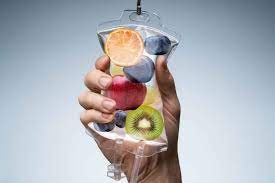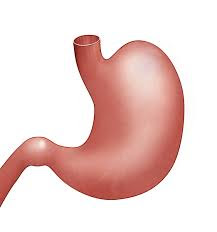How Does an IV Work?
A considerable number individuals are have some familiarity with IVs. If you or a companion or relative has anytime been in the facility, you've probably even experienced an IV exceptionally close. You've seen the shaft with a sack associated with it, coursing a liquid into the patient's body or the like. Do you need a solution to treat flu symptoms, fatigue, and jet lag? Or are you looking for way to look fresher, cleanse your body of toxins, and increase your energy levels. It may sound like you need more than one treatment, but the IV Drip therapy in Dubai can prove this otherwise.
In any case, barely any individuals truly comprehend what unequivocally an IV is and the manner by which it works. If you've anytime had requests concerning IVs or IV treatment, you're following in some admirable people's footsteps.
How an IV Works
In clinical terms, intravenous — or IV, for short — implies the association of substances into the body through a vein or veins. IV treatment, therefore, works by delivering fluids straightforwardly into your veins. There are two fundamental procedures for IV treatment:
1. Implantation
Implantation works by using a needle to force a liquid into the body. IV implantation is the speediest delivery method for all the mixture types (under), and produces the most quick results. As well as being given intravenously, Injections can similarly be given through different courses, for instance,
Intradermal implantations are given straightforwardly into the dermis (the middle layer) of the skin. This has the slowest absorption speed of the implantation types, and is all around put something aside for things like sensitivity tests.
Intramuscular (IM) mixtures are given significant into a muscle and held rapidly by veins. These implantations, for instance, flu shots and epi-pens, are a significant part of the time given in the thigh, shoulder, or butt.
Subcutaneous (SubQ) implantations are given in the most profound layer of the skin. These implantations are more delayed than the intramuscular sort anyway faster than intradermal associations. Ordinary reasons for subcutaneous mixtures consolidate PROCRIT, Arranges, RETACRIT, Prolix, XOLAIR, and NUCALA.
While imbuement is an extraordinarily typical form of intravenous association, when by far most examine "an IV," they are suggesting the second kind of IV treatment — combination.
2. Implantation
Unlike implantation, combination uses a siphon or the customary force of gravity to deliver fluids into the body. For this reason they are every now and again implied as drips. The objective with an IV implantation is to make a controlled delivery of a substance into the circulatory framework long term. Imbuement times will change considering what is a safeguarded drip rate for a given medication or supplement.
In a typical implantation plan, a sack of the substance that is being overseen is suspended from a post and lines are dashed to a catheter in the patient's vein — most consistently arranged in the wrist, elbow, or back of hand. Like IV mixtures, IV imbuements deliver the solution straightforwardly into the course framework, inciting quick maintenance and more discernible fast effects. Some imbuement meds may be given into the skin and muscles, but IV implantation is the most indisputable form of combination treatment available today.
Purposes behind an IV
For a considerable number individuals, an IV drip isn't fundamental for their everyday practice. It may be a typical piece of hospitalization from operation or serious sickness, yet at a similar nothing more. For patients with industrious diseases or extraordinary clinical necessities, in any case, an IV can transform into a crucial piece of living a common life. Presumably the most notable purposes behind receiving an IV are:
Drying out
Since an IV delivers fluid straightforwardly into the circulatory framework, it is the most productive way to deal with rehydrate the body. IV hydration is consistently used to manage hydration levels during an operation as well as to rehydrate patients who have lost fluids due to sickness or excessive active work. Patients can similarly receive IV imbuements of electrolytes and supplements when required.
Infections
In unambiguous cases patients probably won't have the option to take oral immunizing agents poisons, or the pollution might be impenetrable to the available oral remedy decisions. The effective medication in these conditions is generally speaking IV serums poisons, which are more grounded and work more quickly than the oral alternatives.
Chemotherapy for Cancer Treatments
IV chemotherapy is the most notable form of chemotherapy given today. It sends the solution straightforwardly into the dissemination framework through a vein in the arm, hand, or chest to kill harmful development cells generally through the body.
Read More: IV Treatment for Weight Loss




Comments
Post a Comment